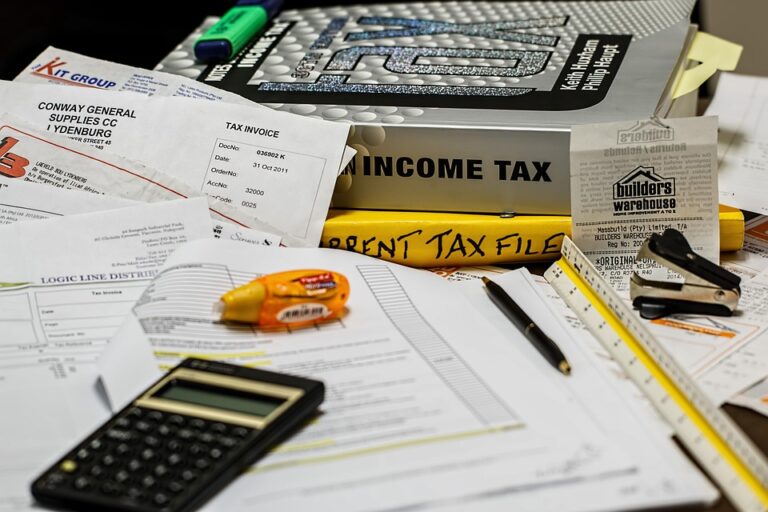Last updated Jul. 15, 2024 by Peter Jakes
<!DOCTYPE html>
<html lang="en">
<head>
<meta charset="UTF-8">
<meta name="viewport" content="width=device-width, initial-scale=1.0">
<title>How To Dispute Errors and Correct Inaccuracies on your Credit Report</title>
</head>
<body>
<h1>How To Dispute Errors and Correct Inaccuracies on your Credit Report</h1>
<p>Your credit report is a critical financial document, influencing everything from credit card approvals to mortgage rates. Ensuring its accuracy is paramount. Errors in your credit report can lead to undesirable consequences, including lower credit scores, higher interest rates, and denied applications. Consequently, disputing errors promptly and effectively is essential.</p>
<h2>Understanding Your Credit Report</h2>
<p>Before you can dispute errors, it’s crucial to understand what your credit report includes. It contains information about your credit history, including the status of your credit accounts and your payment history. Key components include:</p>
<ul>
<li>Personal Information</li>
<li>Credit Accounts</li>
<li>Credit Inquiries</li>
<li>Public Records</li>
</ul>
<h3>Common Credit Report Errors</h3>
<p>Common errors found in credit reports include:</p>
<ul>
<li>Mistaken personal information (e.g., wrong name, address)</li>
<li>Incorrect account details</li>
<li>Duplicate accounts</li>
<li>Mistaken identity</li>
<li>Outdated information</li>
<li>Accounts incorrectly marked as delinquent</li>
</ul>
<h2>Steps to Dispute Credit Report Errors</h2>
<h3>Step 1: Obtain Your Credit Report</h3>
<p>Your first step should be obtaining a current copy of your credit report from all three major credit bureaus: Experian, TransUnion, and Equifax. You are entitled to one free credit report per year from each bureau through AnnualCreditReport.com.</p>
<h3>Step 2: Identify the Errors</h3>
<p>Carefully review each section of your credit report. Look for any discrepancies, especially in account statuses, balances, and payment history. Note down all the errors you find.</p>
<h3>Step 3: Gather Supporting Documentation</h3>
<p>Collect any supporting documents that can help substantiate your claim. This could include bank statements, payment receipts, or correspondence with creditors.</p>
<div class="short-answer">
<style>
.short-answer {
position: relative;
padding: 20px;
padding-top: 30px;
background: #DFF9ED ! important;
border-color: #b0edd2 ! important;
border: 2px solid ! important;
border-radius: 6px ! important;
margin: 22px -3px 23px 0px ! important;
}
.short-answer h3 {
margin-top: 0 ! important;
}
</style>
<h3> ✓ Short Answer</h3>
<p>To dispute errors on your credit report, obtain your reports from all three major bureaus, identify the errors, gather supporting documents, file a dispute with each bureau, and follow up regularly until the inaccuracies are corrected. Documentation is key, and persistence is crucial for a successful resolution.</p>
</div>
<h3>Step 4: Dispute the Errors</h3>
<p>You will need to submit a dispute to each credit bureau that lists the error. This can usually be done online, by mail, or over the phone. Be specific about the error and attach copies of your supporting documents. Here’s how you can contact the bureaus:</p>
<ul>
<li>Experian: online, by mail, or phone</li>
<li>TransUnion: online, by mail, or phone</li>
<li>Equifax: online, by mail, or phone</li>
</ul>
<h3>Step 5: Follow Up</h3>
<p>After submitting your dispute, the credit bureau typically has 30 days to investigate and respond. If the bureau finds in your favor, they will update your report and provide you with a free copy of the corrected report. Be persistent and follow up if you do not receive a timely response.</p>
<h3>Step 6: Notify the Furnisher</h3>
<p>The “furnisher” is the company that provided the information (e.g., your bank or credit card company). It's advisable to also contact the furnisher and inform them of the dispute. Provide the same documentation you sent to the credit bureaus.</p>
<h3>Step 7: Review the Results</h3>
<p>Once the bureau processes your dispute, they will inform you of the results. If the error is corrected, review your updated credit report to ensure all inaccuracies are removed. If the dispute is not resolved in your favor, you can request that the dispute statement be included in your future credit reports.</p>
<h2>Tips for a Successful Credit Report Dispute</h2>
<ul>
<li>Keep detailed records of all communication and documentation related to your dispute.</li>
<li>Be clear and concise in your dispute letters.</li>
<li>Use certified mail to send hard copies of disputes so you have proof of receipt.</li>
<li>Follow up diligently and be persistent, as some disputes may require multiple communications.</li>
</ul>
<h2>Frequently Asked Questions (FAQs)</h2>
<h3>What happens if my dispute is denied?</h3>
<p>If your dispute is denied, you have the right to request that a statement of the dispute be included in your credit report. This statement can be read by anyone who reviews your credit, offering additional context.</p>
<h3>How long does it take to resolve a dispute?</h3>
<p>Credit bureaus typically have 30 days to investigate and respond to a dispute. In some cases, it may take up to 45 days if additional information is provided during the investigation.</p>
<h3>Can I dispute information directly with the furnisher?</h3>
<p>Yes, you can and should dispute directly with the furnisher (the entity that provided the information) as well. This can help expedite the correction process.</p>
<h3>Are there services that can help me dispute errors?</h3>
<p>Several credit repair agencies offer services to help dispute errors on your credit report. However, these services come at a cost, and you can often achieve the same results by disputing errors on your own.</p>
<h3>How often should I check my credit report?</h3>
<p>It's advisable to check your credit report at least once a year. However, more frequent checks are beneficial, especially before applying for major loans or credit cards.</p>
<h3>What if the same error appears again after being corrected?</h3>
<p>If an error reappears, you should contact the credit bureau immediately and provide documentation of the previous correction. Persistent errors may require further escalation.</p>
<h3>Is disputing online better than by mail?</h3>
<p>Both methods have merits. Online disputes are faster and more convenient, while mail disputes allow you to include physical copies of documents and records of communication.</p>
<h3>Can disputing errors impact my credit score?</h3>
<p>Disputing errors in itself does not impact your credit score. However, correcting inaccuracies can lead to improvements in your score, especially if the errors involve negative marks.</p>
</body>
</html>






